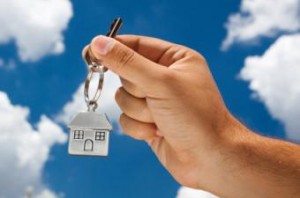 Given that nearly all the news about the homebuying market these past few years has focused on tight markets, lower-than-expected activity, and mortgages that keep circling the drain, it may seem easy to overlook a basic question—is anyone buying second homes these days?
Given that nearly all the news about the homebuying market these past few years has focused on tight markets, lower-than-expected activity, and mortgages that keep circling the drain, it may seem easy to overlook a basic question—is anyone buying second homes these days?
As it turns out, yes. According to a new Fannie Mae report, those with the means are taking advantage of low-interest mortgages and stagnant inventories in Florida, California, Arizona, and other vacation markets to purchase second homes.
These homes, which are neither investment properties nor primary residences, have on average made up 4.76 percent of the total purchase mortgage market since 1998, and according to Fannie, that percentage has grown in recent years.
The recession, of course, badly wounded second home purchases, but contrary to popular thought, the drop in purchases didn't last long: "Americans still aspire to buy second homes and have contributed to the growth of the market consistently since its bottom in 2009," said Fannie Mae's business analyst David Kopita. And according to the National Association of Realtors (NAR) vacation-home sales jumped almost 30 percent, from roughly 553,000 in 2012 to 717,000 in 2013.
According to NAR, the average second home buyer is 47 years old and part of a two-income household. Nearly two-thirds finance their purchases, though most made large down payments to help keep their mortgages even lower.
NAR attributes the upswing in vacation homes to healthier equity markets that, according to the group's chief economist, Lawrence Yun, "has greatly benefited high-net worth households."
According to Fannie, many in the banking industry are taking the increased interest in vacation home purchases as a sign of better times and a budding niche, after years of strangulating new lending regulations and fears of ever writing another loan that might feasibly default. The easier breath is based in the idea that second home buyers are by nature more flush individuals who have better odds of successfully paying down loans.
The hottest second home markets are exactly where they should be—Florida, California, and Arizona, where price declines were at their highest. These markets averaged roughly 43 percent drops in home prices between 2006 and 2012, making them ripe for the picking for those with the financial wherewithal to buy.
Consequently, the big allure might have less to do with vacationing and more to do with investment: After taking a beating in the stock market, investors have finally realized the age-old way of building wealth lies in real estate, especially when mortgage rates are so low.

 theMReport.com Your trusted source for mortgage banking news
theMReport.com Your trusted source for mortgage banking news








